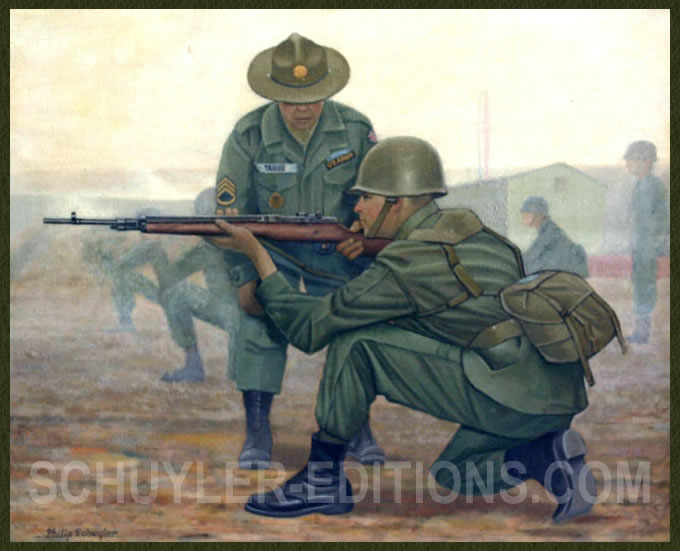
Rifle Practice
30" x 24"
Oil on Canvas
Fort Ord, California – September, 1966
3rd Platoon, HQ Company, 2nd Battalion, 3rd Brigade
Staff Sergeant Anselmo Tahud, Drill Instructor – Sacramento, California
Private James McClellan, Basic Trainee – Ridgecrest, California
On a rifle range near the sea on a foggy fall morning in 1966, Private James McClellan
fired his rifle for the approval of his instructor,Sergeant Tahud, in an effort to exceed
all his past performances.This scene records an experience remembered by every soldier
who has gone through basic combat training. The rifle is a basic weapon. Actual taking
and holding of ground in military campaigns is accomplished by foot soldiers carrying rifles.
In the sixth decade of the twentieth century, with sophisticated weaponry and
highly developed support, this is still a fact. An important part of any army, therefore, is
the infantry conditioned to marching and skilled in the use of small weapons.
Beginning in the first week of basic training, a soldier becomes acquainted with his rifle.
For the rest of his infantry life it will be his close companion.He will learn how to take it apart,
clean and repair it,reassemble it, how to hold it, and how to shoot it with speed and accuracy
from various positions. Since a soldier in combat cannot depend on targets being clear and
stationary at a given distance,a new exercise has been developed for firing concurrent
with detection. On the Trainfire Range, targets pop out of the bushes or other natural
concealment at varying distances. The soldier must identify the target, judge distance
and windage, use his battle sight, and attempt to score a hit. In the first eight weeks of
basic training soldiers qualify for badges they wear proudly on their uniforms proclaiming them
Marksman, Sharpshooter, or Expert.
